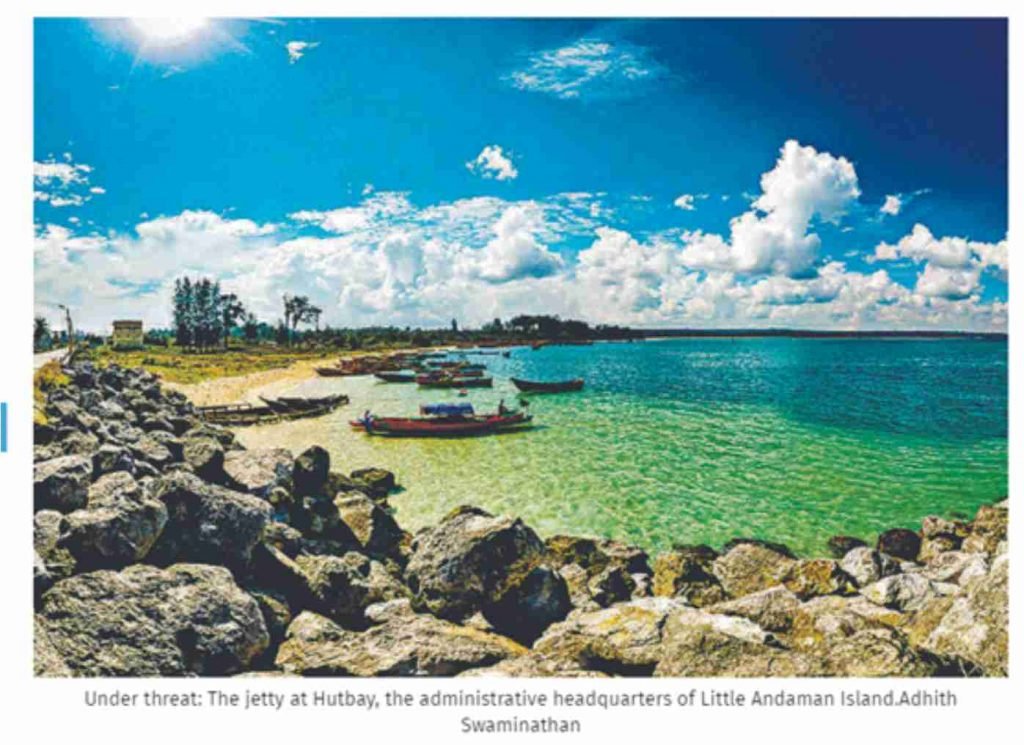Current Affairs (1st February 2021)
3-language policy
CONTEXT:
- The Union Ministry of Home Affairs has said the three language policy is not applicable to offices of the Union government.
ABOUT :
- “As per the provision of the Official Language Act, 1963, and the Official Language Rules, 1976, the provision of bilingual policy is applicable in the offices of the Central government.”

- In the draft NEP released last year, a paragraph suggested that under the three-language formula, teaching/learning Hindi will be mandatory in those states where the language is not usually spoken.
- Following protests by non-Hindi speaking states like Tamil Nadu, the Centre dropped the reference to mandatory learning of Hindi.
- The choice of languages learnt will depend on the state and the students. However, it is mandatory for at least two of the three languages to be native to the country – one of which is most likely to be the local/regional language.
- Although a statement issued by the Ministry of Education says that “no language will be imposed on any student”, it is not clear to what extent a student will be able to choose a particular language.
GST Revenue collection
CONTEXT:
- The gross GST revenue collected in the month of January 2021 is ₹ 1,19,847 croreof which CGST is ₹ 21,923 crore, SGST is ₹ 29,014 crore, IGST is ₹ 60,288 crore (including ₹ 27,424 crore collected on import of goods) and Cess is ₹ 8,622 crore (including ₹ 883crore collected on import of goods).
- The total number of GSTR-3B Returns filed for the month of December up to 31st January 2021 is 90 lakhs.
ABOUT:
- The GST revenues during January 2021 are the highest since introduction of GST and has almost touched the ₹ 1.2 lakh crore mark, exceeding the last month’s record collection of ₹1.15 lakh crore.
- GST revenues above ₹ 1 lakh crore for a stretch of last four months and a steep increasing trend over this period are clear indicators of rapid economic recovery post pandemic.
- Closer monitoring against fake-billing,deep data analytics using data from multiple sources including GST, Income-tax and Customs IT systems and effective tax administration have also contributed to the steady increase in tax revenue over last few months.

Megacity plan for Little Andaman
Context:
- A plan for the sustainable and holistic development of the 680 sq km, fragile Little Andaman Island in the Andaman and Nicobar group has raised the alarm among conservationists.
About:
- The ‘Sustainable Development of Little Andaman Island – Vision Document’, is the NITI Aayog’s proposal to leverage the strategic location and natural features of the island.
- This will be done by building a new greenfield coastal city there, that will be developed as a free trade zone and will compete with Singapore and Hong Kong.
- The proposal is pivoted along three development anchors and zones.
- Zone 1 — spread over 102 sq km along the east coast of Little Andaman — will be the financial district and medi city and will include an aerocity, and a tourism and hospital district.
- Spread over 85 sq km of pristine forest, Zone 2, the leisure zone, will have a film city, a residential district and a tourism SEZ.
- Zone 3 — on 52 sq km of pristine forest — will be a nature zone, further categorised into three districts: an exclusive forest resort, a nature healing district and a nature retreat, all on the western coast.
- There will be ‘underwater’ resorts, casinos, golf courses, convention centres, plug-and-play office complexes, a drone port with fully automated drone delivery system, nature cure institutes and more.
- An international airport capable of handling all types of aircraft will be central to this development vision .
- The only jetty on the island will be expanded and a marina will be developed next to the tourist entertainment district.
- A 100 km greenfield ring road will be constructed parallel to the coastline from east to west and will be supplemented with a mass rapid transit network with stations at regular intervals.
- The comparison with Singapore, for instance, is one key. It has a map of Little Andaman overlaid on Singapore’s, along with the following statistics: “The population density of the Andaman and Nicobar is 47 people per sq km while it’s (sic) 7,615 persons per sq km in Singapore. Its per capita income is $1,789 compared to Singapore’s $55,182.”
‘BLOCKS’ TO DEVELOPMENT
- Lack of good connectivity with Indian mainland and global cities, a fragile biodiversity and natural ecosystems and certain Supreme Court notifications that pose an impediment to development.
- Another key factor is the “presence of indigenous tribes and concerns for their welfare”.
- 95% of Little Andaman is covered in forest, a large part of it the pristine evergreen type.
- Some 640 sq km of the island is Reserve Forest under the Indian Forest Act, and nearly 450 sq km is protected as the Onge Tribal Reserve, creating a unique and rare socio-ecological-historical complex of high importance.
- The vision needs 240 sq km (35%) of this land and the solutions suggested are— de-reserve 32% of the reserved forest and de-notify 138 sq km or 31% of the tribal reserve. And if the tribals become an impediment, they “can be relocated to other parts of the island”.
Loopholes in vision document:
- No legends or explanations and uses inappropriate photographs plagiarised from the Internet.
- It talks of conservation of national park/wildlife sanctuary on Little Andaman when none exist here and it has no mention of the geological vulnerability of the place, which was amongst the worst-affected in the earthquake-tsunami combination in 2004.
- The waves hit Little Andaman so hard that on December 26 the breakwater there was not just breached, it was physically displaced and it’s orientation changed. Ships could not berth for weeks thereafter.
- No financial details, no budgeting, or inventorisation of forests and ecological wealth and no details of any impact assessment.
- The nature resort complex proposed at West Bay on the western coast is to have theme resorts, floating/underwater resorts, beach hotels, and high-end residential villas.
- It is today a secluded and difficult to reach part, one of the most important nesting sites of the globally endangered Giant Leatherback sea turtle which is being studied by the Dakshin Foundation, the Andaman and Nicobar Environment Team and the island administration’s Forest Department.
Forest Dept.’s concerns
- Large diversion of forest land would cause obvious environmental loss leading to irreversible damage (more than 2 million trees stand in the forest land sought for these projects), that habitats of various wild animals including endangered sea turtles would be affected, and that the impact could not even be assessed because there was no environment impact assessment report and neither were there any detailed site layout plans for the proposed diversion.

Census
CONTEXT:
- The Centre will push the 2021 Census to 2022 on account of the country’s continuing preoccupation with the COVID-19 pandemic.
NPR update
- The Census exercise was to be conducted in two phases — House Listing and Housing Census from April to September 2020 and Population Enumeration from February 9 to February 28, 2021.
- The first phase of the Census and the updating of the National Population Register (NPR) were initially to be rolled out in some States on April 1, 2020, but were postponed due to the pandemic.
- The entire process had become controversial after Parliament approved the Citizenship (Amendment) Act in December 2019 that sought to give citizenship to persecuted minorities from Bangladesh, Afghanistan and Pakistan who entered India on or before December 31, 2014.
- However, the rules required for implementing the CAA have not been framed so far — more than a year after the passage of this key legislation. Diplomatic sources believe that strong opposition from Bangladesh is one of the factors that led to the CAA remaining on hold.
- Tens of thousands of people had taken to the streets across the country protesting against the Centre’s decision to update the NPR, which is considered the basis for the preparation of a National Register of Citizens (NRC) that could potentially exclude millions of people born in India.

